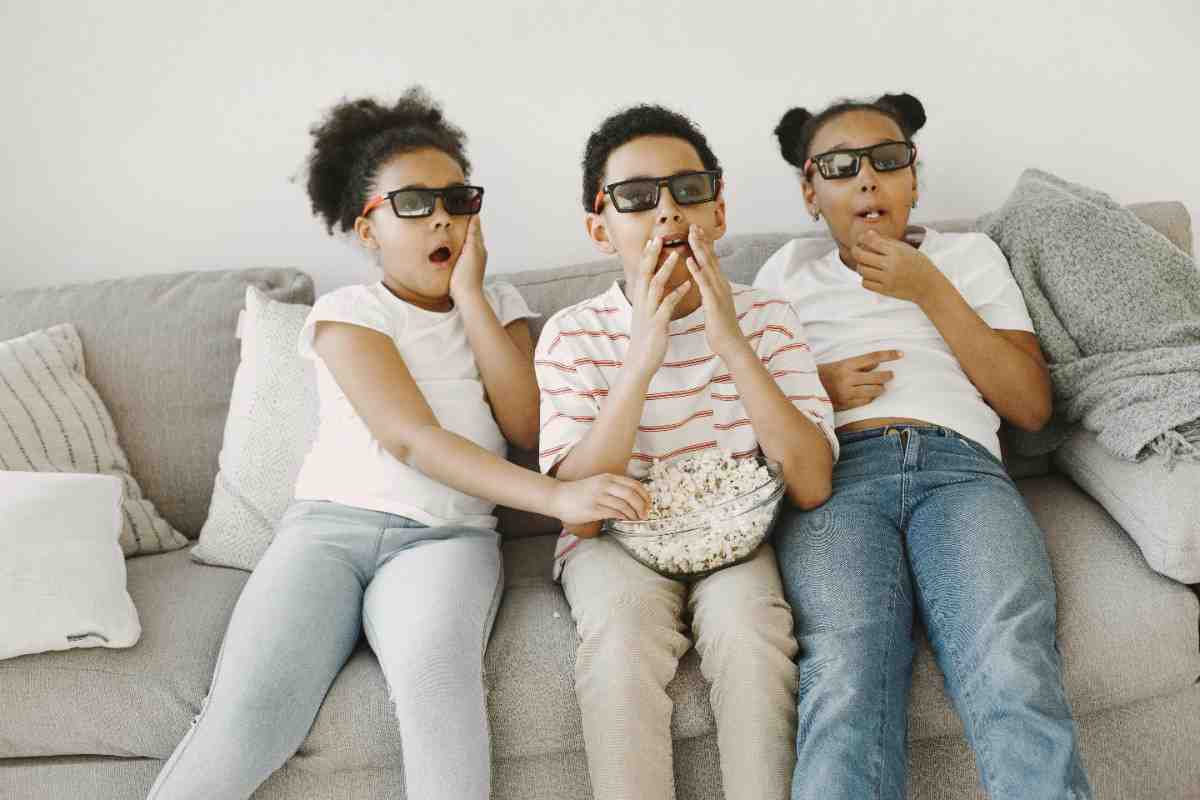With the rise of immersive entertainment, 3D movies and video games have become incredibly popular. Kids are especially drawn to the captivating, lifelike experiences these formats offer.
Whether it’s a dinosaur leaping out of the screen or a character dodging objects in a virtual world, 3D effects are undeniably thrilling.
But as a parent, you may wonder: Is it safe for my child to watch 3D movies or play 3D video games? Could it strain their eyes, alter their development, or affect their health in any way?
This blog post dives into the current research, expert opinions, and practical tips to help you make an informed decision. We’ll explore how 3D affects children’s vision, development, attention span, and overall well-being—while also considering the benefits and potential risks of this increasingly common digital experience.
Understanding 3D Technology: How Does It Work?
Before we dive into safety, let’s quickly understand how 3D works.
In 3D viewing, each eye receives a slightly different image to mimic depth perception—much like how our eyes naturally function. Specialized glasses or screens help the brain merge these two images into a single three-dimensional one.
This illusion of depth is exciting and can enhance immersion—but it can also place unique demands on the visual system, particularly in children whose eyes are still developing.
Children’s Visual Development: Why Age Matters
Children’s eyes are not just smaller versions of adult eyes; they are still developing in early childhood. Most visual development happens before the age of 7, including:
- Eye coordination (binocular vision)
- Focusing ability
- Depth perception
- Hand-eye coordination
When a child watches a 3D movie or plays a 3D game, their visual system must work harder than it does with 2D images. This can be challenging for kids under 6, whose visual system might not yet be mature enough to handle such stimulation without discomfort.
✅ Key Point:
The American Academy of Ophthalmology suggests that children under 6 should limit exposure to 3D viewing, especially for extended periods.
Potential Risks of 3D for Kids
Let’s take a look at the specific concerns raised by pediatricians, optometrists, and vision scientists:
👁️ 1. Eye Strain and Fatigue
3D viewing can lead to eye strain, especially when watched for extended periods. The mismatch between where the eyes focus (on the screen) and where they converge (in the illusion of 3D depth) creates a conflict the brain has to resolve constantly.
Symptoms your child may experience include:
- Headaches
- Blurred vision
- Dizziness
- Tired or burning eyes
🧠 2. Motion Sickness or Dizziness
Some children experience motion sickness or nausea while watching 3D content. This is because their inner ear and visual cues are misaligned—what they see doesn’t match what their body feels.
Children with sensory sensitivities or vestibular (balance-related) issues may be particularly prone to discomfort.
🧒 3. Temporary Visual Confusion
After watching 3D content, some kids might find it hard to refocus or coordinate their eyes, resulting in temporary double vision or balance issues. While this usually fades quickly, it can be distressing for the child.
What About Long-Term Effects?
So far, no studies have proven long-term harm from moderate 3D exposure in healthy children. However, experts recommend caution, especially for children with existing vision problems, such as:
- Lazy eye (amblyopia)
- Eye misalignment (strabismus)
- Binocular vision dysfunction
- Focusing difficulties
For these kids, 3D viewing may highlight underlying problems or worsen symptoms.
If your child avoids watching 3D or says it looks “weird,” that could be a red flag—they may be struggling with depth perception and should be seen by an eye doctor.
The Bright Side: Are There Benefits to 3D Content?
Surprisingly, yes—3D content can offer cognitive and educational benefits when used correctly and in moderation.
🎯 1. Improved Depth Perception Practice
Playing certain 3D video games (especially those involving navigation or spatial puzzles) may help train hand-eye coordination and improve visual processing.
🧠 2. Engagement in Learning
3D educational content—like nature documentaries or anatomy apps—can make learning more immersive and memorable. This can especially benefit visual learners.
🧒 3. Motivational Boost
Kids often feel more engaged and excited when content is visually dynamic. Used appropriately, 3D can be a motivational tool for exploration and discovery.
Guidelines for Safe 3D Viewing for Kids
As with most technology, balance and supervision are key. Here are practical tips to keep 3D content both safe and enjoyable:
⏱️ 1. Limit Viewing Time
Keep 3D exposure to 30 minutes or less per session, especially for younger children. Follow with a break from screens to allow the eyes to rest.
👓 2. Use High-Quality Equipment
Poor-quality 3D glasses or screens can cause more strain. Make sure your devices are calibrated correctly, and always use manufacturer-recommended accessories.
🧍 3. Watch for Discomfort Signs
Encourage your child to speak up if they feel unwell, dizzy, or have blurry vision. If symptoms persist after viewing, consult an eye specialist.
🛋️ 4. Maintain Proper Distance and Lighting
Children should sit at least 6 feet away from the screen, in a well-lit room to reduce contrast-related eye strain.
🔄 5. Alternate with 2D Content
Balance immersive 3D games with standard 2D playtime. This gives the visual system variety and avoids overstimulation.
How to Know If 3D Isn’t Right for Your Child
Ask yourself these questions:
- Does my child frequently complain of headaches after screen time?
- Do they avoid 3D movies or say they “don’t look right”?
- Do they seem more tired, dizzy, or unfocused after 3D gaming?
If yes, consider:
- Cutting back on 3D exposure
- Booking a comprehensive pediatric eye exam
- Talking to a pediatrician about sensory sensitivity or screen fatigue
When Can Kids Safely Start Watching 3D Content?
Most experts agree that occasional 3D exposure is fine after age 6, assuming the child has healthy vision and no related conditions.
The sweet spot for safe and enjoyable viewing seems to be:
- Ages 7–12: Short, supervised sessions are generally okay.
- Teens and older: Typically handle 3D well, with reduced risk of strain.
As with all screen-related content, the focus should be on moderation, supervision, and balance.
Conclusion: Informed, Not Fearful Parenting
The bottom line? 3D movies and video games aren’t inherently dangerous, but they require thoughtful limits—especially for younger or visually sensitive children.
With responsible use, proper timing, and awareness of warning signs, kids can enjoy 3D technology safely. Like all digital tools, 3D content should be a part of a balanced digital diet, not the main course.
By staying informed, observing your child’s responses, and consulting professionals as needed, you can make tech a positive part of your family’s experience—without compromising well-being.









